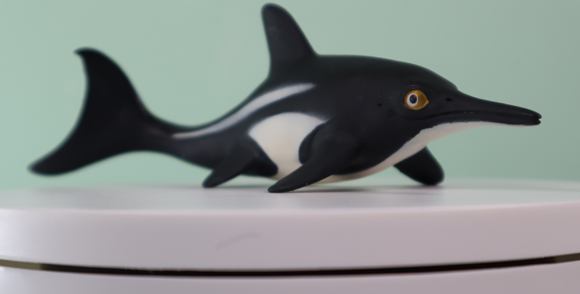Window into an Ancient Post Permian Ecosystem Provided by Amazing Fossils
20,000 Fossils Provide Glimpse into Marine Ecosystem Post Mass Extinction Event
A hillside in south-west China has revealed a treasure trove of beautifully preserved fossils, capturing an almost entire ecosystem and providing scientists with an insight into how life on Earth recovered from the Permian mass extinction event. The discovery of such a wealth of fossil material may help scientists to understand more about how ecosystems and natural communities recover from extinction events.
The mass extinction event that ended the reign of the dinosaurs may be better known, but the extinction event some 250 million years ago that ended the Permian Period was more severe with an estimated 95% of marine animal species dying out. Scientists have calculated that approximately two-thirds of all the land vertebrate families also died out. One of the factors involved in the mass extinction was a huge reduction in the total area of shallow continental shelf sea environments as plate movements created one, global, large land mass. Ironically, the 16-metre-thick limestone sediments that have yielded the fossils represent the deposits at the bottom of a shallow, marine environment.
Permian Ecosystem
The record of this ancient marine ecosystem forms part of a hillside in Luoping County, Yunnan Province, south-west China. Since 2007 teams of fieldworkers and researchers have been carefully examining and extracting fossils, mainly invertebrates such as molluscs, sea urchins and arthropods but also fish and marine reptiles including ichthyosaurs. Something like 20,000 specimens have been discovered so far, many of which have had soft body parts preserved providing palaeontologists with a huge amount of data about life in the Early Triassic, post the Permian mass extinction event.
The excavation work was supervised by scientists from the Chengdu Geological Centre in China and the paper, which was co-authored by Professor Michael Benton (Bristol University) has been published in the scientific journal “The Proceedings of the Royal Society B (Biology)”. The site preserves evidence of an entire marine ecosystem, providing scientists with an understanding of how organisms recovered from the Permian mass extinction event.
Amongst the many beautifully preserved remains are those of some of the earliest large marine reptiles known from the Triassic. These animals would have been the apex predators, at the top of the food chain. The biggest creature discovered so far is a thalattosaur (name means “ocean lizards”), a type of marine reptile over 3 metres long, which would have preyed upon the larger fishes that lived in the shallows. The exact phylogeny of the thalattosaur group is not known, but most scientists believe that this group should be placed between the later ichthyosaurs and more primitive archosaurs that adopted a marine habit.
A Model of an Ichthyosaur

The Ichthyosaurus model (Wild Safari Prehistoric World) ready to take its turn on the Everything Dinosaur turntable. Picture credit: Everything Dinosaur.
Picture credit: Everything Dinosaur
To view the Wild Safari Prehistoric World range: Wild Safari Prehistoric World Figures.
The Chinese scientists also unearthed a number of ichthyosaurs, providing evidence of the evolutionary origins of this important group of marine predators.
Professor Shixue Hu of the Chengdu Geological Centre stated:
“It has taken us three years to excavate the site, and we moved tonnes of rock. Now, with thousands of amazing fossils, we have plenty of work for the next ten years.”
Commenting on the discovery, Professor Benton (Bristol University) added:
“The fossils at Luoping have told us a lot about the recovery and development of marine ecosystems after the end-Permian mass extinction. There is still more to be discovered there and we hope to get an even better picture of how life reasserted itself after the most catastrophic global event in the history of our planet.”
He went onto comment:
“The few hardy species that survived the ensuring scarcity of food, wild fluctuations in temperature and shortage of oxygen in the ocean served as the starting point for the recovery of life in the next geologic period, known as the Triassic.”
Until the discovery of the extensive fossil site at Luoping, very little fossil material from the Permian/Triassic boundary was known. The strata has been dated to approximately 245 million years ago, providing an insight into the rise of life forms after a mass extinction event.
Only about half the site has been explored to date, scientists are confident that many new species will be unearthed. The site has provided the researchers with a better understanding of how groups of organisms recovered from the extinction event. It seems that small, marine invertebrates recovered first, with ammonoids (cephalopods – ammonites) reaching precataclysm levels of diversity within two million years, as did snails and other molluscs such as clams and oysters.
However, it seems that the severity of the extinction event meant that it took around ten million years for a fully established ecosystem to develop. The site has also a number of fossils of land based organisms, including reptile teeth and plant material such as fir cones. These items were washed into the sea by rivers that emptied into the shallow bay.
A fossil tooth is so well preserved that the serrated edges of the tooth can still be made out. Archosaurs became the dominant land reptiles during the Triassic, the tooth was washed into the sea after having been shed on land.
For models and replicas of prehistoric animals: Prehistoric Animal Models and Replicas.

